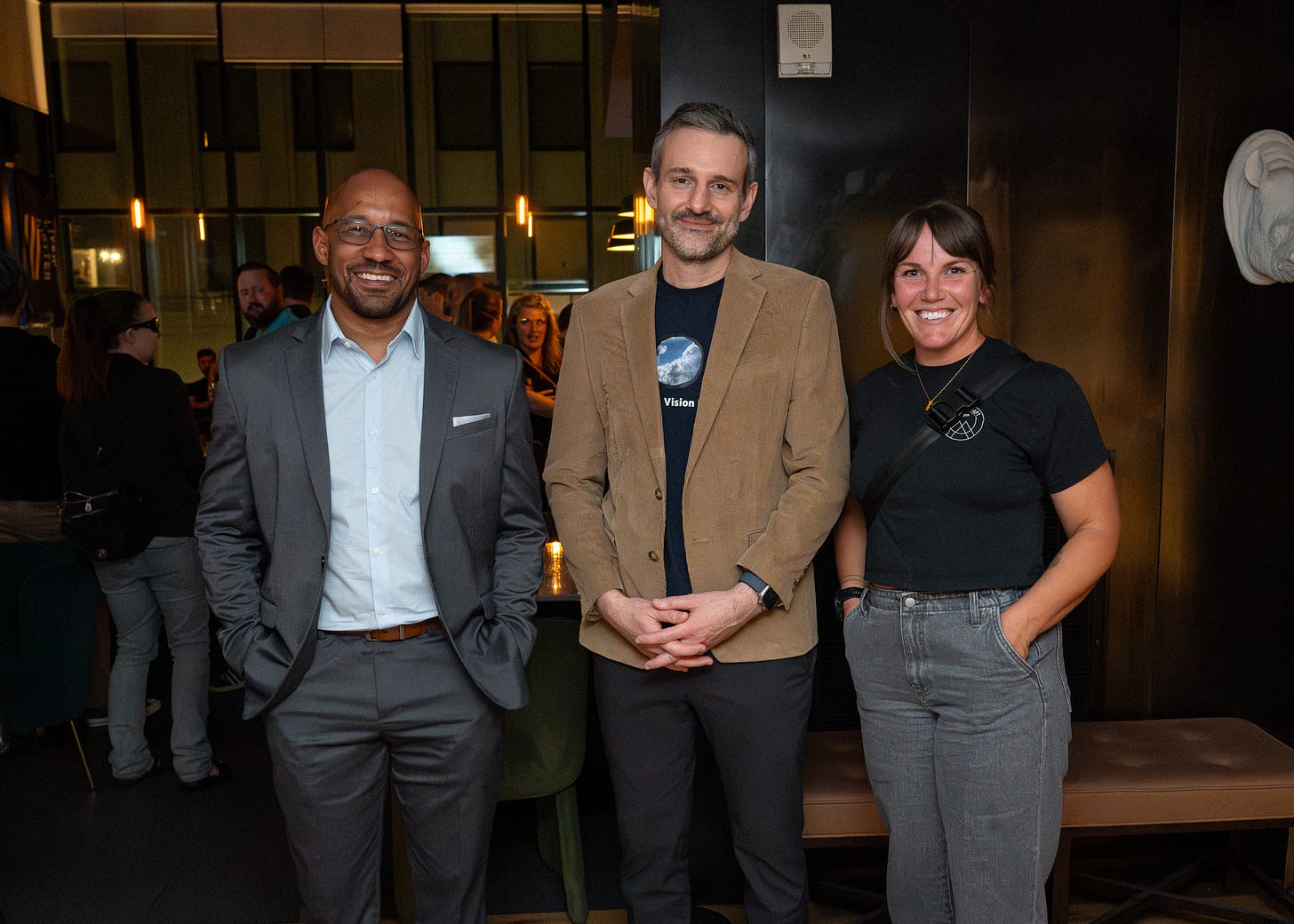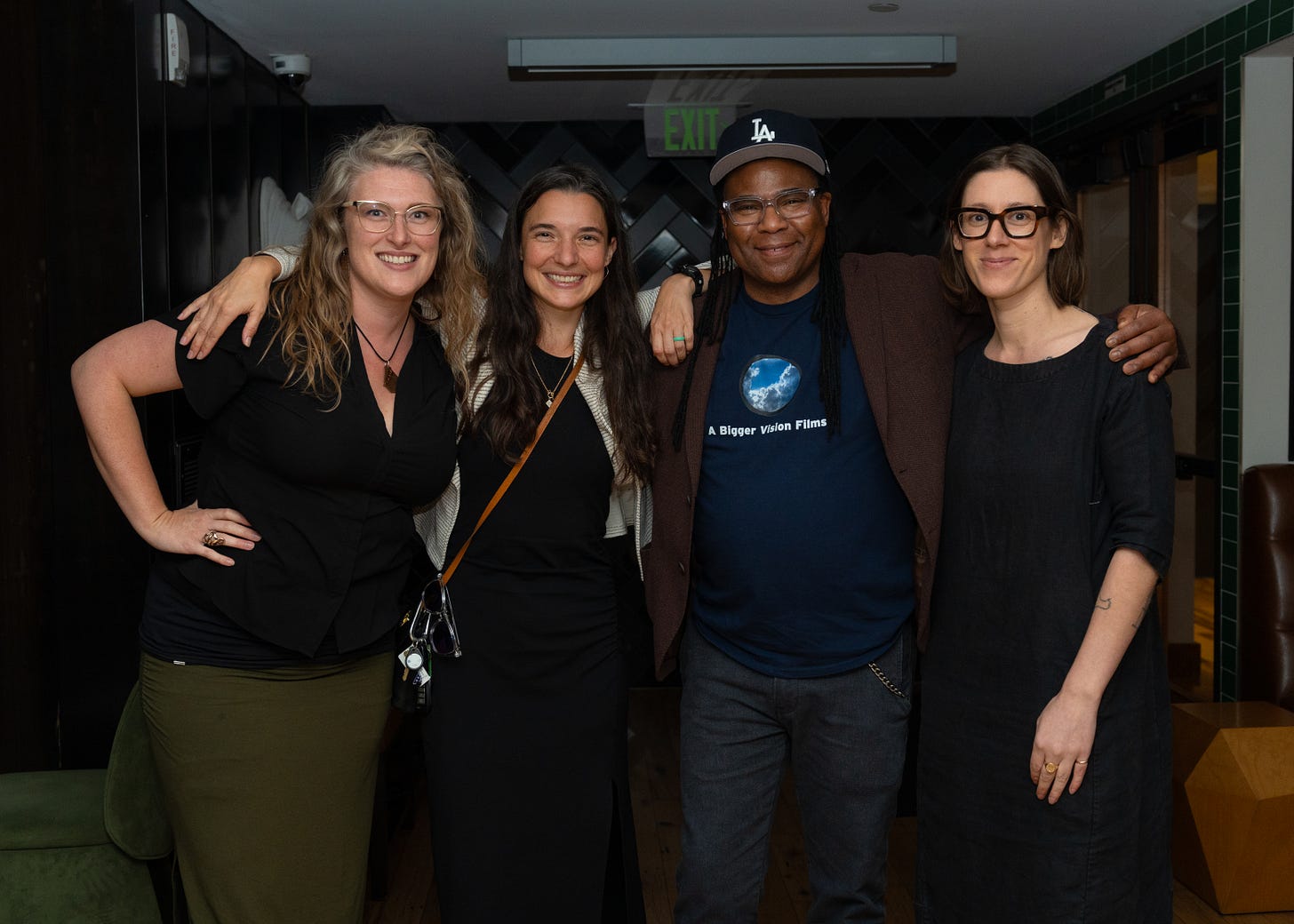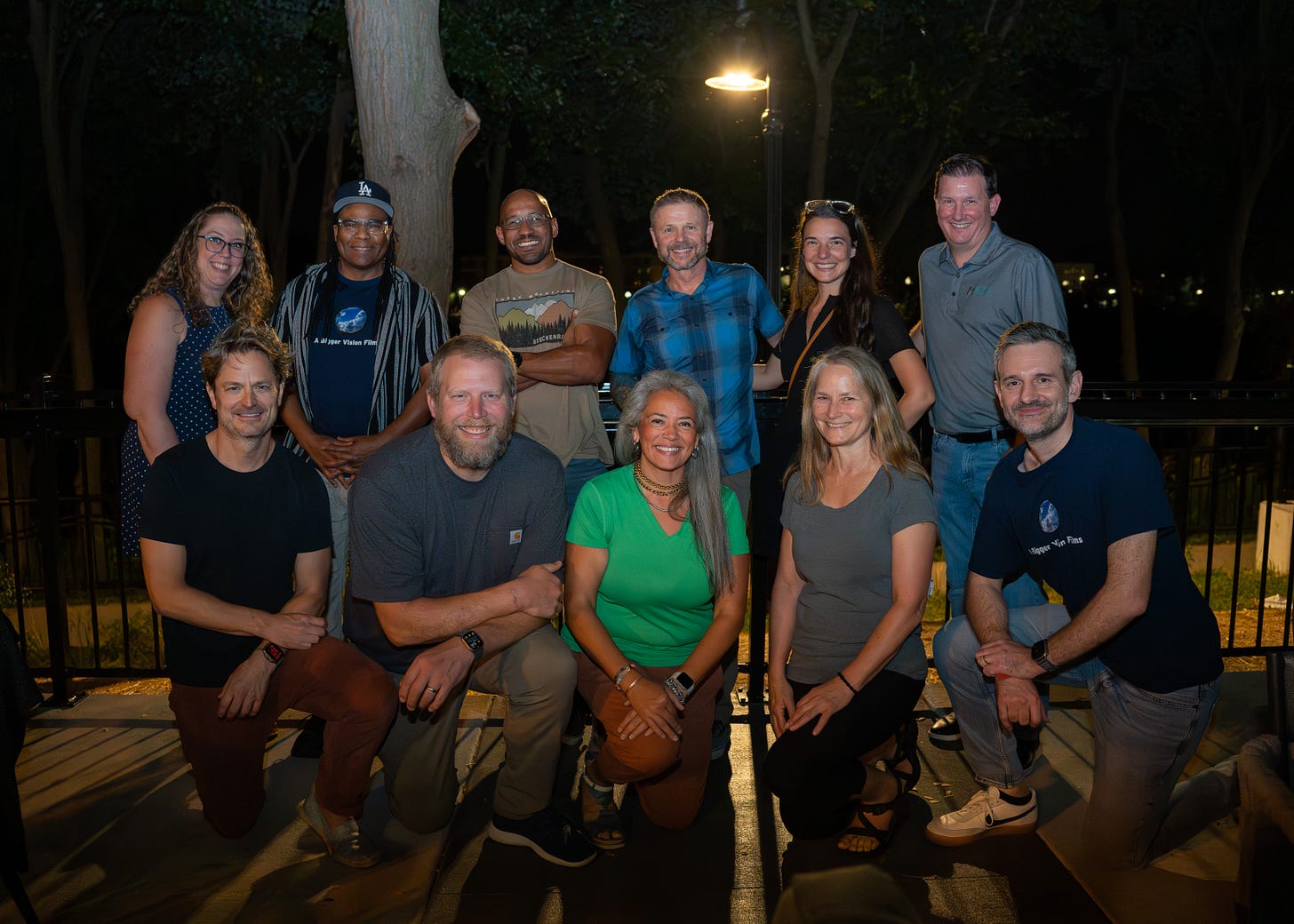The following covers the film screening of the Beyond the Bridge: A Solution to Homelessness in Eau Claire on September 17th. There were many individuals and entities involved in bringing this screening to Eau Claire, and the film continues to be shown across the USA. For more screening dates, visit https://asolutiontohomelessness.com/.
In the past few years, I made more frequent trips to Milwaukee, where C.C. We Adapt has expanded to serve participants in southeast Wisconsin. One of these recent trips coincided with a screening of the documentary Beyond the Bridge: A Solution to Homelessness. I was too late to catch the film but caught up with the crew who’d organized it, and they invited me to join them at a bar afterward with the filmmakers.
As I walked through downtown Milwaukee near the University of Marquette, I remembered my experiences being homeless there in 2011. I walked that exact street in search of money so I could buy alcohol, drugs, and then a place for shelter — in that order. I was deployed to Iraq from 2004-2005 and again from 2007-2008, and when I returned, I was hospitalized for severe combat PTSD and addiction issues. My path to sobriety and recovery wasn’t linear, and I was kicked out of the Veteran Affairs hospital for drinking. Growing up, my family faced housing insecurity and lacked equitable access to resources. Now as an adult with nowhere to go, I lived on the streets of Milwaukee, a scenario that was not new for me.
But on this night, a dozen years later, I crossed the street in a sharp black suit and dress shoes. I was now well-accustomed to circles of social enterprise, advocacy, and the arts. No one would look at my outfit or my demeanor and think I’d lived on the streets. In the bar, the positive energy was palpable. I recognized James Mathy from the Milwaukee County Housing Division, who is a key figure in Beyond the Bridge. We’d worked together before, so I went over and said hello. Then I made my way through the crowd, introducing myself to new people and learning about their role in bringing the film screening and panel discussion to Milwaukee. Eventually, I was introduced to Don Sawyer, one of the filmmakers. The tone of our conversation shifted, and although Don was festive, celebrating the success of the screening, he was also ready to talk business.
In 2015, Don Sawyer and Tim Hashko released Under the Bridge: The Criminalization of Homelessness. In it, the filmmakers followed individuals residing in a tent city in Indianapolis. The inevitable question viewers walked away with was, “Is there a solution to homelessness?” So the filmmakers packed a car and drove 40,000 miles across the United States in search of a solution. Their second documentary Beyond the Bridge: A Solution to Homelessness highlights the efforts of cities like Milwaukee, Houston, and Denver to reduce and eliminate chronic homelessness. They spent significant time with individuals who were unhoused, and met with community leaders, state and federal employees, nonprofit organizers, and policy experts to discuss solutions. What they found, according to Don, was that, “[m]ass homelessness is not caused by the individuals; it is a structural issue, which requires structural responses.”
I agreed with this assessment, both from my lived experience with housing insecurity and in my role now with C.C. We Adapt, where we provide peer support mentorship as well as tenant support mentorship — working one on one with individuals to ensure access to housing also includes access to support and resources for mental health and recovery.
Although we recognize homelessness is a structural issue requiring structural responses, the fault or blame is often misplaced. What the filmmakers found in their extensive cross-country travels was how, in Don’s words, “the go-to move of the public officials who are not trying to solve the problem but want the public to believe they are is that they blame the homeless community.”
Again, I nodded in agreement. In our efforts to house individuals at C.C. We Adapt, we experienced immense and surprising pushback from the city and other housing collectives, and even state officials who influenced policy and public aid decisions. I felt like Don understood what I was seeing, especially as a fellow Black man in this space, where people who look like us are more likely to be a client of these same housing programs than we are to be given a seat at the table to influence change.
When Don’s co-producer Tim Hashko joined our conversation, we connected over parenting, with Tim and I trading stories of our kids. My sons are the reason I got into peer support and mentorship and wanted to expand into tenant support mentorship. At 14, I was unhoused and on the run from law enforcement in Wisconsin and Minnesota. It was one of the scariest summers of my life, even when I count the deployments to Iraq. I don’t want anyone to have to experience what I lived through, but despite the time that’s passed since then, I still see teenagers now who find themselves in similar scenarios — and families struggling to find stable housing means they struggle to access resources which could lead to better outcomes in health and education. Personally, and selfishly, I want my sons to grow up in a world where homelessness is a thing of the past. After years of working in peer support, I’ve come to understand that housing is first and foremost. Once a family or an individual has a roof over their head, they can access the resources they need to succeed in the community.
Since I hadn’t had a chance to watch the film, Don and Tim kindly sent it to me to watch when I got home. I was amazed by the way they humanized homelessness, and the clarity with which they portrayed the reality of housing insecurity. Remarkably, the film also unpacks the tangled web of bureaucracy and ambition which expands the chasm between the desire to solve homelessness and the actual act of solving it. I knew we needed to bring this film to Eau Claire.
Thankfully, Astri Graceheart of Home for Good had already seen the film and came to this same conclusion. As the Program Director for the Eau Claire-based nonprofit, Astri had viewed the film at a conference and had stayed in touch with its producer and one of the main characters in the film. We wondered if it was possible to bring the film and the filmmakers to Eau Claire and started taking action. We only had three weeks to organize and promote it, a deadline which provided a stark reminder that winter is coming to Wisconsin — a time where our community’s resources for homelessness reach a dire pitch, ensuring people living on the streets do not freeze to death. We know this issue is not theoretical, but grounded in the reality that lack of stable housing here is a life-or-death situation.
The night of the screening, almost 600 individuals attended. The Pablo Center at the Confluence graciously donated their theater for the evening. The panel discussion was brilliantly moderated by Catherine Emmanuelle, the University of Wisconsin–Eau Claire’s Director of the Center for Racial and Restorative Justice. Don Sawyer appeared on the panel, alongside James Mathy of the Milwaukee County Housing Division, local business owner and advocate Laura Lash, City Council member Roderick Jones, and C.C. We Adapt’s Alisa Diaz, who spoke to her experience with housing insecurity and homelessness in rural Wisconsin.
The film screening, panel discussion, and housing first model was covered by Volume One, UWEC’s Spectator, WEAU, and WEAU Morning Connection the impressive turnout and positive response made it clear the Chippewa Valley is invested in finding a swift and comprehensive response to the growing numbers of unhoused individuals in our community. The most cogent message arising from the evening was how we need to work together in an intentional and cohesive manner, pooling our resources and strengths, and working side by side to ensure every member of our community has a place to call home.







